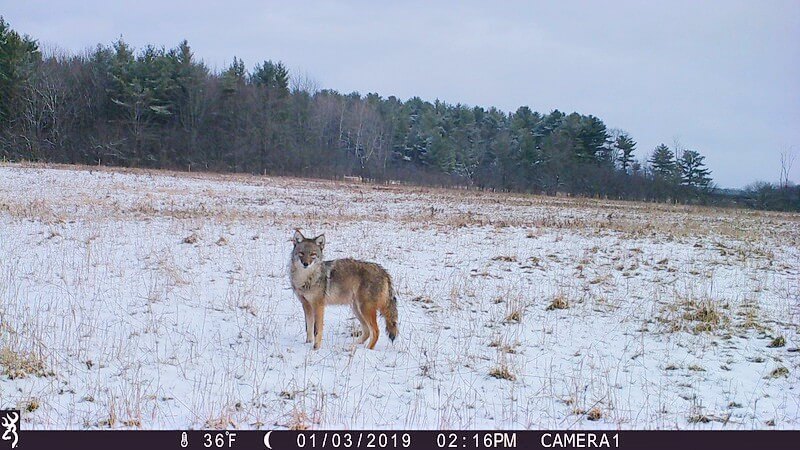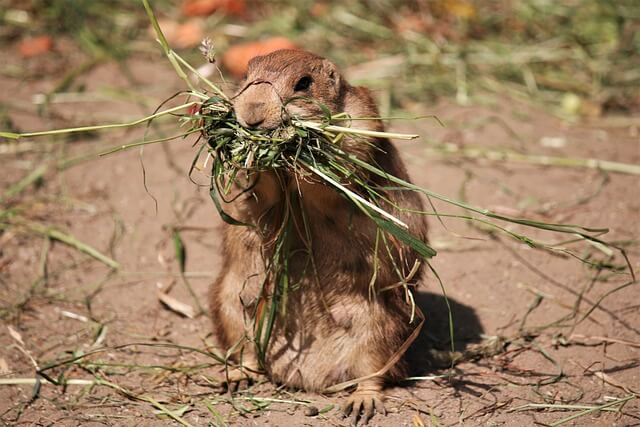Rekindled fecundity in the cloudiest place in the lower 48 states
What’s to love about late February?
For starters, 10 hours of daylight. Red-winged blackbirds are back and birdsong fills the morning air. Woodpecker drumming echoes across the land. ‘Tis a fecund season, too, with mating — both silent and not-so-much — taking place all around us. And how about snow fleas?

Between courting owls and Eastern coyotes mating, a quiet night is a tall order in some neighborhoods right now. Coyotes begin breeding at 2 years of age. After about nine weeks of gestation, a litter of pups arrives.
As humans encroach on their habitat, coyotes’ reproductive strategy is key to survival. When their numbers decrease, remaining coyotes produce larger litters with higher survival rates. Farmers aiming to protect their livestock may find themselves in an unproductive cycle as killing coyotes only increases the population.
About those snow fleas. For starters, they are not fleas but springtails. Mary Holland, a superb nature writer, tells us that springtails, measuring about 1/10 an inch, can propel themselves up to 20 times their body length. The human equivalent is a jump over one-third of a football field.
Snow fleas are black but their relatives can be red, orange, white, green, blue, yellow and brown.
Holland writes, “The springtail’s body is covered in scales and its mouth is deeply pocketed, looking like it lost its dentures and then sucked on a bunch of lemons.”
Several hundred thousand springtails may inhabit a cubic yard of earth where they feast on decaying fungi and algae. Only on warm spring days do they emerge to the surface, looking as if a pepper shaker was upended on the snow. Their hopping, or springing about, is fun to watch.
February averages the same number of sunny days as January but there is more warmth and hope in that sunshine. When we bought our Charlotte home in the mid-’80s, then town clerk Hazel Prindle congratulated us on moving to the cloudiest place in the lower 48 states, the Champlain Valley.

The Farmers’ Almanac affirms, “Lake Champlain, the Atlantic Ocean and the Green Mountains are just a few of the factors that account for Vermont’s huge number of overcast days.” Vermont, it claims, sees only 58 days of full sunshine each year, whereas Seattle, legendary for its rain, experiences 71 sunny days.
Spending Vermont’s cloudiest months, November and December, slumbering is a viable strategy. Whether black bears are true hibernators is debated as definitions change, but call it what you will, they sleep through the coldest months when food is scarce. The Vermont Center for Ecostudies writes, the largest mammals that are true hibernators are marmots, including woodchucks, also known as groundhogs, which tip the scales at about 11 pounds. Hibernation entails lowered body temperature, respirations and metabolic rates.
My garden nemesis, the woodchuck, lowers its heart rate from 80 beats per minute to just four or five during hibernation. Body temperature drops from 98 to 38 degrees. Woodchucks are rodents, characterized by incisors that grow continuously. Their teeth are kept short by constant gnawing, on my vegetables for example. During hibernation, growth stops. Male woodchucks awaken in February and prowl for females with whom to mate as the latter slumber in underground tunnels.
Other mammals breeding now include racoons, beavers and bobcats. River otters are giving birth after delayed implantation and a 10-month gestation.
February is a busy time. Even paying slight attention, we can’t help but notice that spring is in the air and the equinox is less than four weeks away.

